Planning a trip to Death Valley? Don’t forget to check out this ultimate guide to Death Valley National Park. You’ll find lots of great tips and things to do when visiting Death Valley National Park.
Death Valley is the second-largest national park in the United States and is located in southeastern California on the border to Nevada. The name of the park may not sound particularly inviting. Nevertheless, Death Valley is one of the most beautiful national parks in the United States.
The park with the desolate desert landscape is one of the driest, warmest, and most extreme places on earth. In July, it’s unbearably hot with an average temperature of 47 degrees. In fact, it’s so hot that this is where the highest temperature ever measured on earth. Back in 1913, the temperature was measured to be an unbearable 56.7 degrees.
Despite its dramatic name and arid climate, Death Valley is home to more than 1,000 different species of desert plants. Several of the plant species are only found right here in Death Valley. When visiting Death Valley, you’ll be greeted by a fascinating desert landscape with dramatic mountains, beautiful rock formations, endless sand dunes, and parched salt flats. There’s no doubt that Death Valley is one of the most unforgettable things to do in California and the United States in general.
If you’re planning a trip to Death Valley, it’s a good idea to be prepared before entering the harsh desert. That’s exactly why I’ve made this guide to Death Valley National Park with lots of tips and things to do.
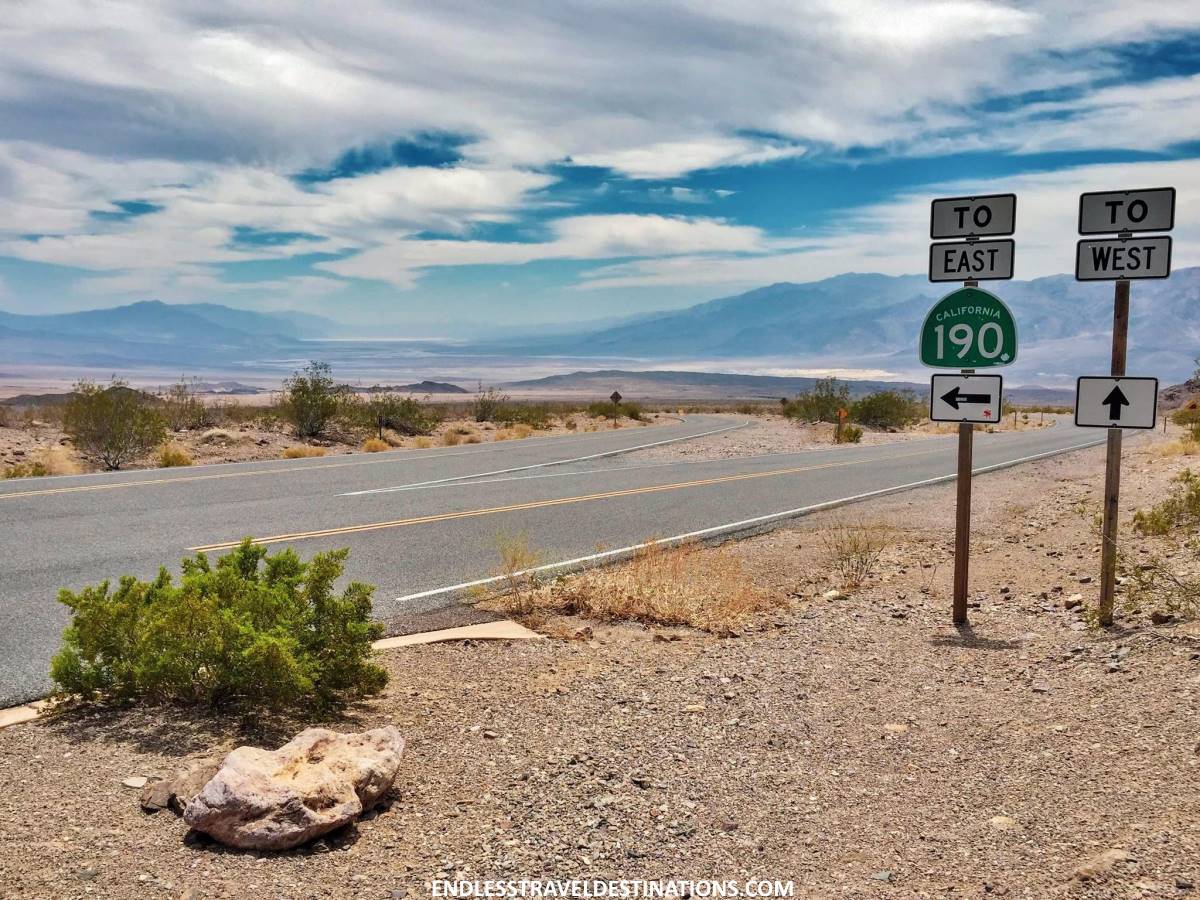
Table of Contents
Guide to Death Valley National Park:
Best time to visit Death Valley National Park
Death Valley is open all year round. The weather is usually dry and sunny, as there isn’t much rain. The best and most popular time to visit Death Valley is in the spring with pleasant temperatures. At this time of year, the temperature is warm and the weather is sunny without getting too hot. Spring is also the most beautiful time to visit Death Valley because the wild desert flowers emerge at this time of year.
Another great time to visit Death Valley is in the fall with temperatures being equally comfortable. If you want to visit Death Valley in the winter, be aware that temperatures are usually around 18-20 degrees. It doesn’t sound extremely cold. But since it’s located in the Mojave Desert, it can get incredibly cold in the evening and at night.
In the summer it’s extremely hot in Death Valley and the average temperature is 47 degrees in the month of July. I myself visited Death Valley in July, where the temperature at one point crept up to 50 degrees. It was insanely hot! And it felt like a blow dryer was blowing hot air right in your face while the sun was baking and frying on your skin.
It can be downright dangerous to visit Death Valley during the summer months. Over time, there have been several deaths associated with heatstroke. However, it usually doesn’t go that far if only you’re prepared for the heat. Bring plenty of water, avoid long walks and be sure to stay near an air-conditioned car.
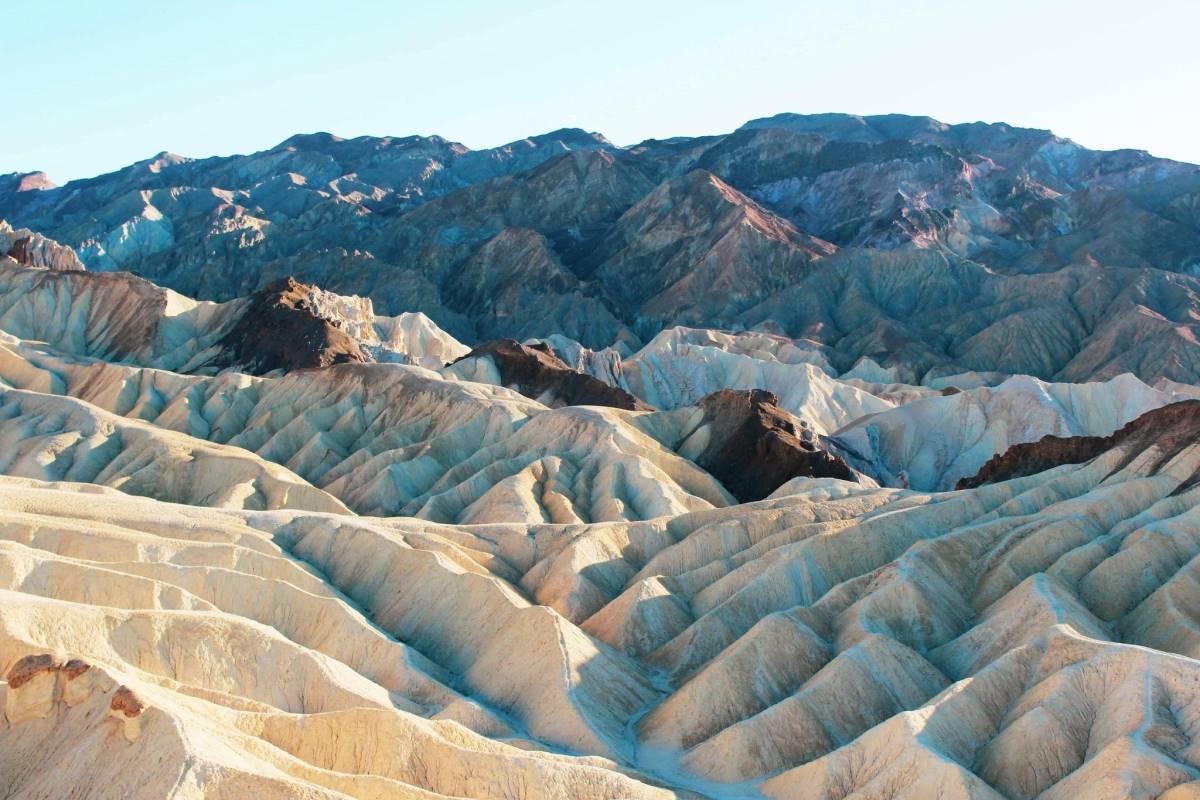
Getting to Death Valley National Park
Las Vegas is the largest city close to Death Valley. This is where you’ll find McCarran International Airport. The drive from Las Vegas to Death Valley takes about 2.5 hours by car.
In addition to driving from Las Vegas, many tourists also choose to drive from Los Angeles. Here you’ll find Los Angeles International Airport. The drive from Los Angeles to Death Valley takes about 5 hours by car.
Note that there are many other small towns and airports either inside the park or relatively close by. However, the options are very limited due to their small sizes.
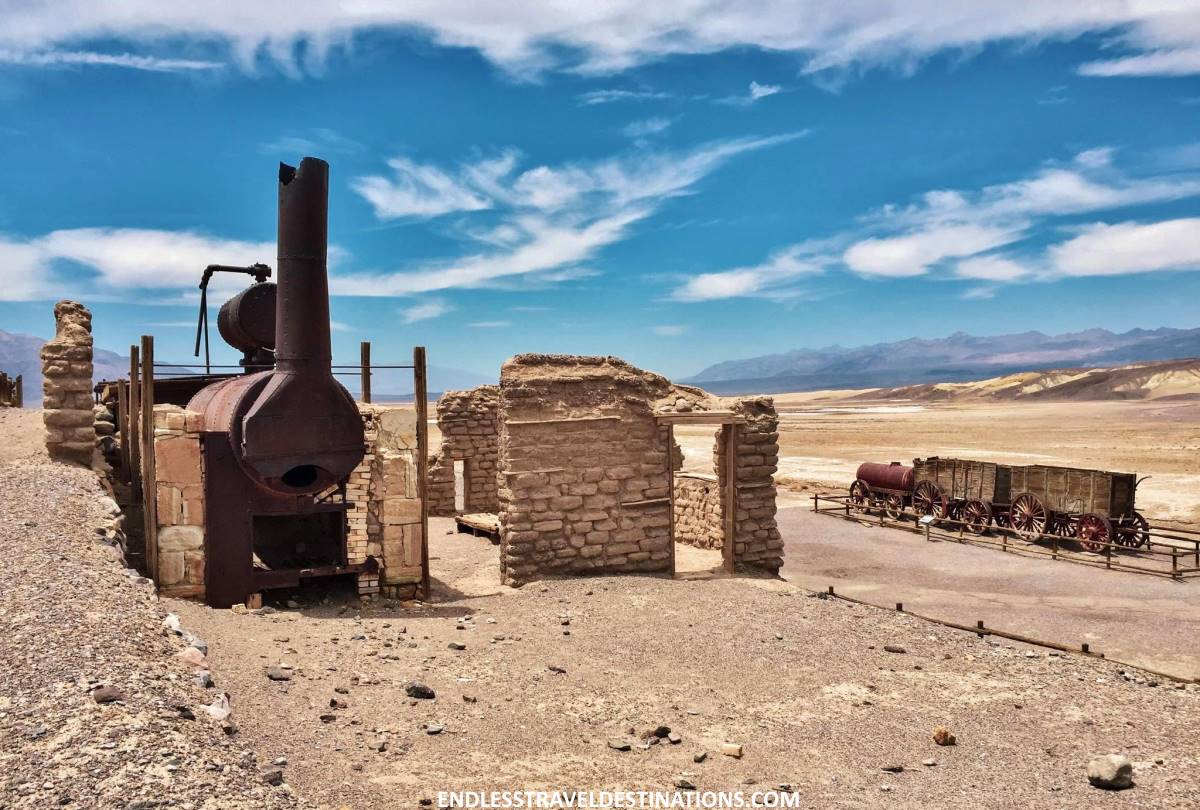
Entrance fee to Death Valley National Park
Admission to Death Valley is $ 25 per car giving free access to the park for 7 days. You must be aware that you cannot pay at the entrance to the park. They trust that visitors will make sure to pay at one of the visitor centers or the machines located around the park. If you don’t pay, you could risk a fine.
If you’re planning on visiting several national parks in the United States, I highly recommend purchasing an America the Beautiful Pass. By paying $ 80 per car, all passengers in the car get free access to freely visit all national parks and other recreational areas in the United States for an entire year. The pass can be purchased at the entrance to the national parks. But it can also be purchased at the entrance to all the other areas it provides access to.

Getting around Death Valley National Park
There’s no public transportation in Death Valley. So, you must drive around Death Valley in your own car or a rental car. Luckily, it’s easy to find around. The main roads in the park are well maintained and there’s good signage. You should be aware that the signal for GPSs and mobile phones is extremely limited in the park.
As the second-largest national park in the United States, Death Valley is huge! There are only three gas stations inside the park and prices are generally higher than outside the park. Therefore, it’s important to fully refuel before arriving in Death Valley.
While it can be insanely hot in Death Valley, be careful not to overuse the air conditioning in the car. In the worst case, it can lead to overheating and engine stalling. And there isn’t much help in the bare desert. Emergency assistance is really expensive, and you may have to wait for hours. So, remember plenty of water, not only for yourself but also for the car.
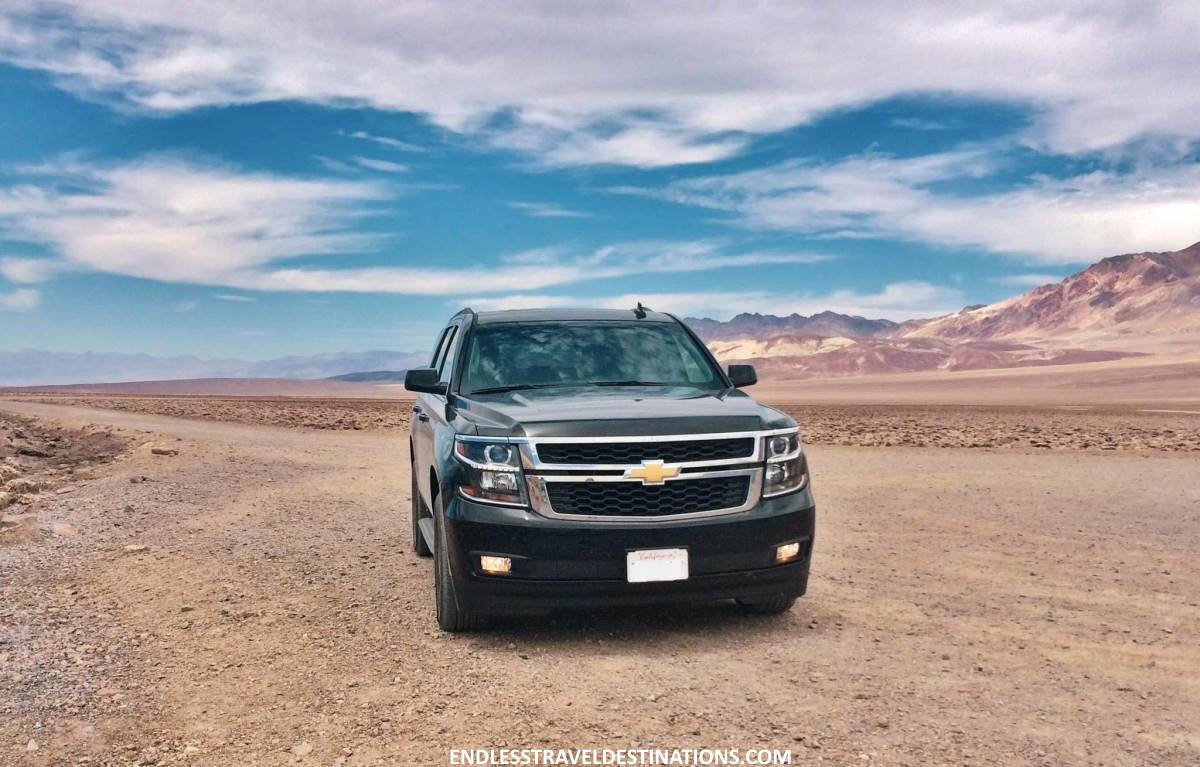
Wildlife in Death Valley National Park
Despite the arid desert landscape of Death Valley National Park, there’s rich wildlife. The animals living in the park have learned to adapt and cope in the harsh conditions of the desert. Although there are many animals in Death Valley, it’s rare for visitors to encounter them.
The permanent inhabitants include fish, birds, bats, hares, kangaroos, desert turtles, lizards, bighorn sheep, deer, foxes, and donkeys. You’ll also be able to encounter more dangerous animals in Death Valley, such as coyotes, bobcats, and mountain lions. You should be aware that there may also be rattlesnakes, scorpions, and poisonous spiders lying on the ground.
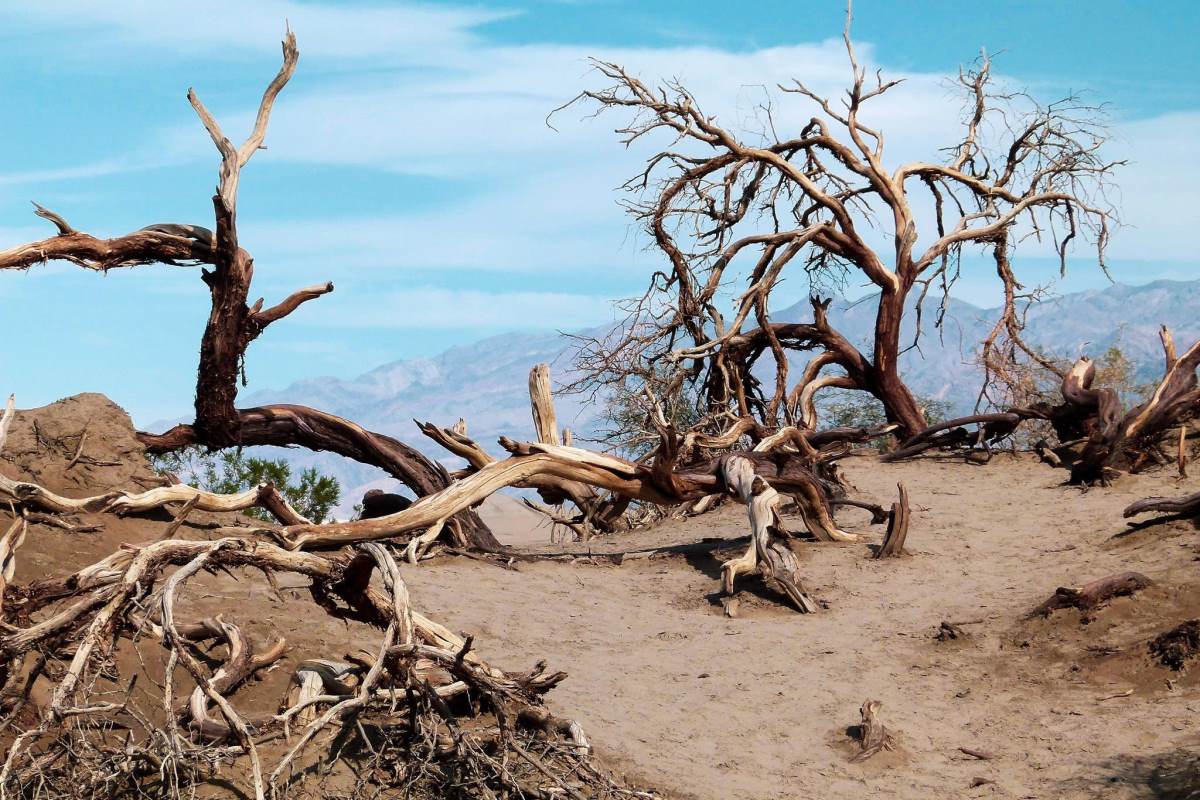
Best things to do in Death Valley National Park
So, you can find many exciting things to do in Death Valley National Park. It’s easy to spend at least a whole day in there. In this ultimate guide to Death Valley National Park, I’ve gathered an overview of some of the very best things to do in Death Valley.
1. Artist’s Drive and Artist’s Palette
One of the best things to do in Death Valley is a drive on Artist’s Drive. This is a 14.5-kilometer-long one-way side road to the main road. The scenic road is surrounded by colorful mountains, gorges, and rock formations in beautiful colors.
Along the way on Artist’s Drive, there are countless places to stop the car and enjoy the sight of the breathtaking scenery. The main attraction is Artist’s Palette, a beautiful and colorful area. You can either enjoy the view from the car park or go for a walk on the hills.
2. Zabriskie Point
Another extremely popular thing to do in Death Valley is Zabriskie Point, one of the most beautiful vantage points in the park. From here you’ll be able to enjoy the sight of a distinctive lunar landscape with colorful wavy mountains almost as far as the eye can see.
Zabriskie Point is also one of the most popular places to watch the sunrise in Death Valley. I highly recommend getting up early in the morning for this unique experience. From the parking lot to the vantage point there’s a paved path. It only takes about 5 minutes to walk up there.
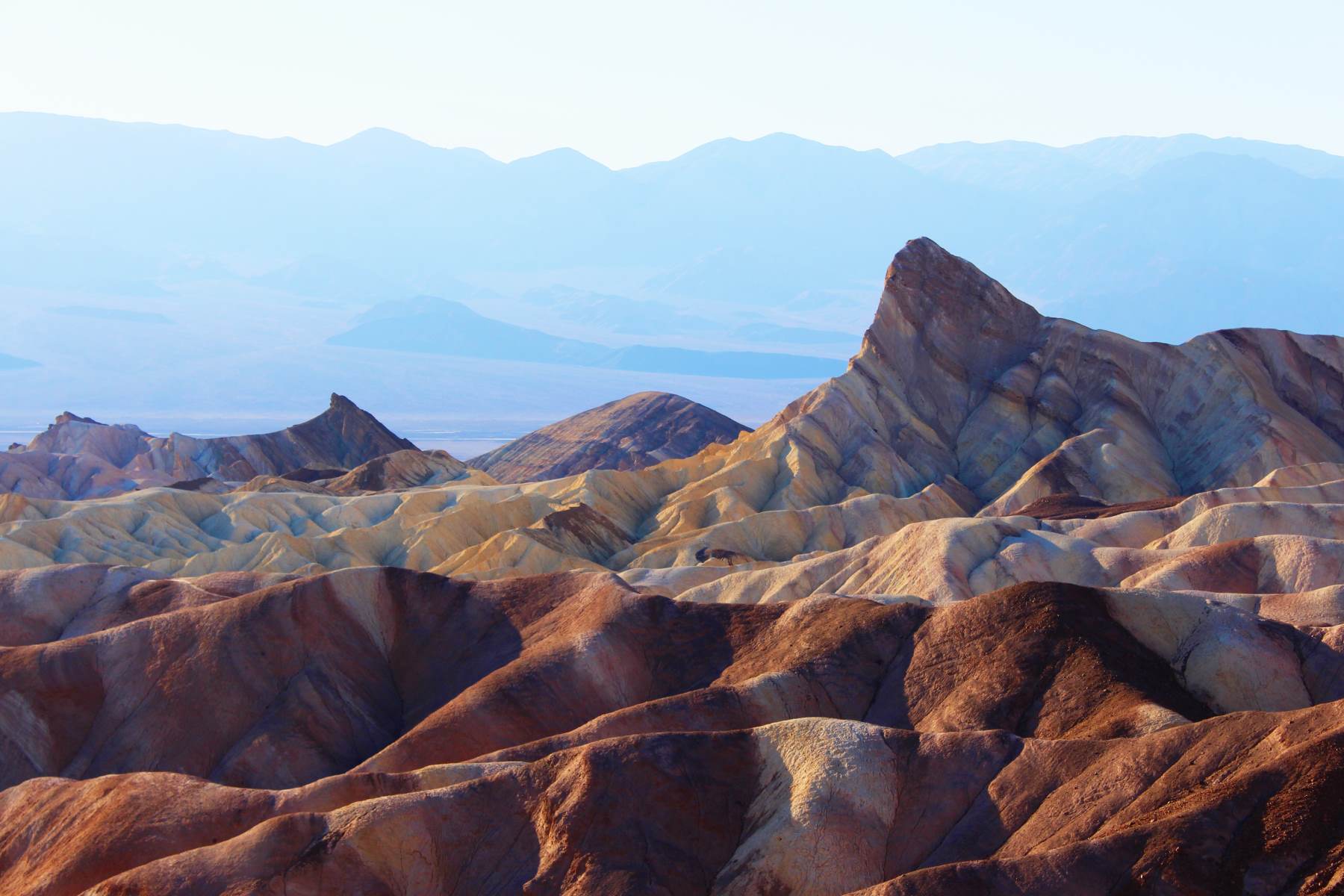
3. Dante’s View
Dante’s View is one of the best vantage points in Death Valley National Park. It’s located at a staggering height of 1,669 meters. From the vantage point at the parking lot, you’ll be greeted by stunning panoramic views of the Badwater Basin, the lowest point in North America.
If you’ve time, I also recommend visiting one of the other vantage points nearby. They’re only a short walk from the parking lot and offer even better views without the large tourist crowds. The best time to visit Dante’s View is at sunrise or sunset.
4. Natural Bridge Canyon
Natural Bridge Canyon is a naturally formed gorge with a high rock bridge created naturally by erosion. The path to the Natural Bridge is short and requires only a short hike of about 3.5 kilometers round trip. You can also choose to continue further into the gorge until you reach a dried-out waterfall. Natural Bridge Canyon is impressive and definitely is a memorable thing to do in Death Valley.
5. Badwater Basin
Badwater Basin is one of the things to do in Death Valley you really cannot miss! Located 86 meters below sea level, Badwater Basin is the lowest point in North America.
Park the car and move out onto the large salt flats, leading out to Badwater Basin. It doesn’t take long, but it can still be incredibly hard in the summer months. There’s no shade and the trip are longer than it seems. Remember plenty of water and maybe a cap or sun hat.
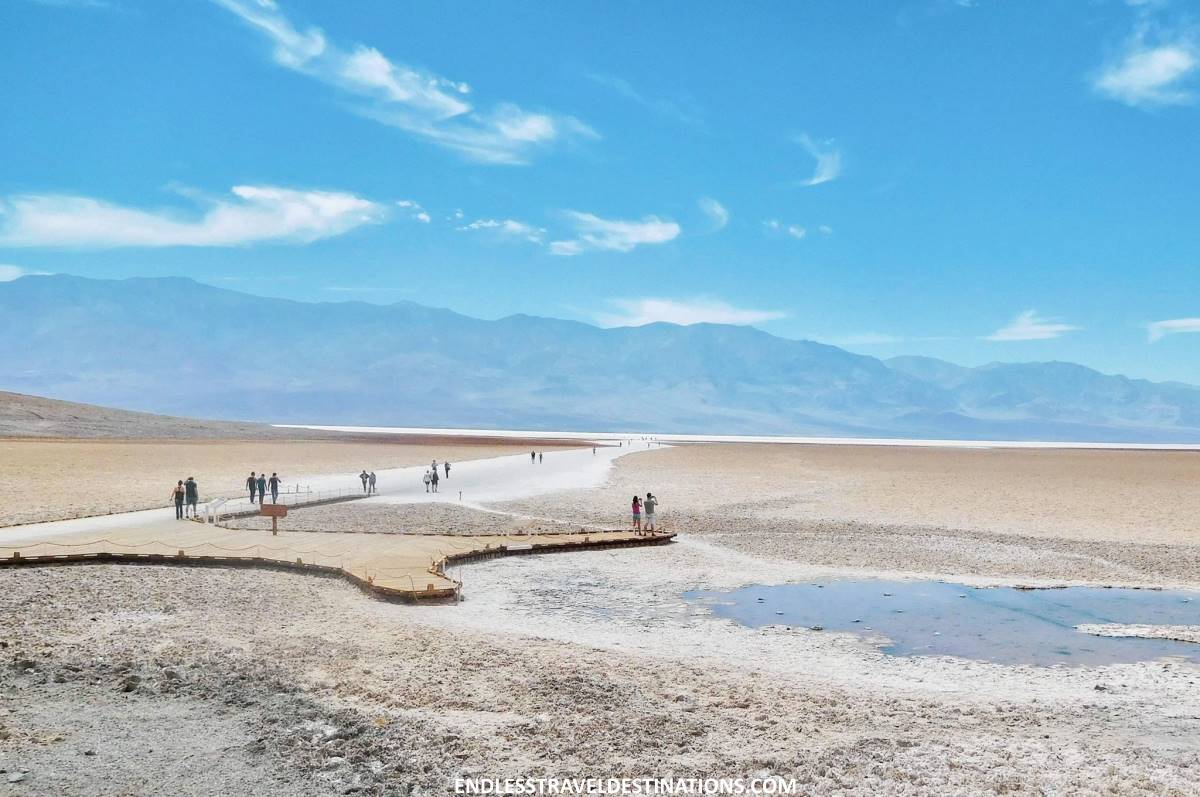
6. Golden Canyon
Golden Canyon is one of the most popular places for hiking in Death Valley National Park (if not the most popular). Here you can go on several different hikes in the adventurous golden hills and narrow gorges. The shortest path is Badlands Loop which is a round trip of 4.3 kilometers in total. The longest path, on the other hand, is the Complete Circuit, which is a round trip of 12.6 kilometers. Read more about the hiking trails in the Golden Canyon.
7. Ubehebe Crater
Ubehebe Crater is a large volcanic crater that is about 183 meters deep and 1 kilometer wide. This is the largest of several volcanic craters in the area, all of which bear witness to Death Valley’s volcanic past.
You can easily see Ubehebe Crater from the parking lot. However, it’s best experienced by a hike around the crater or down to the bottom of it. Don’t forget to stop by Little Hebe Crater to get a great overview of a volcanic crater.
8. Mesquite Flat Sand Dunes
Mesquite Flat Sand Dunes are the most famous and easiest sand dunes to visit in Death Valley National Park. Not only are they close to the road, but they’re also incredibly beautiful. If you want the best pictures of the sand dunes, arrive at sunrise or sunset. At these times of the day, the sun is so low that beautiful shadow contrasts are created in the almost endless sand dunes.
If you have the courage, you should go so far into the sand dunes that there are no more footprints from other people. It can be hard walking in the sand dunes, but it’s all worth it! Remember to pay attention to wildlife.
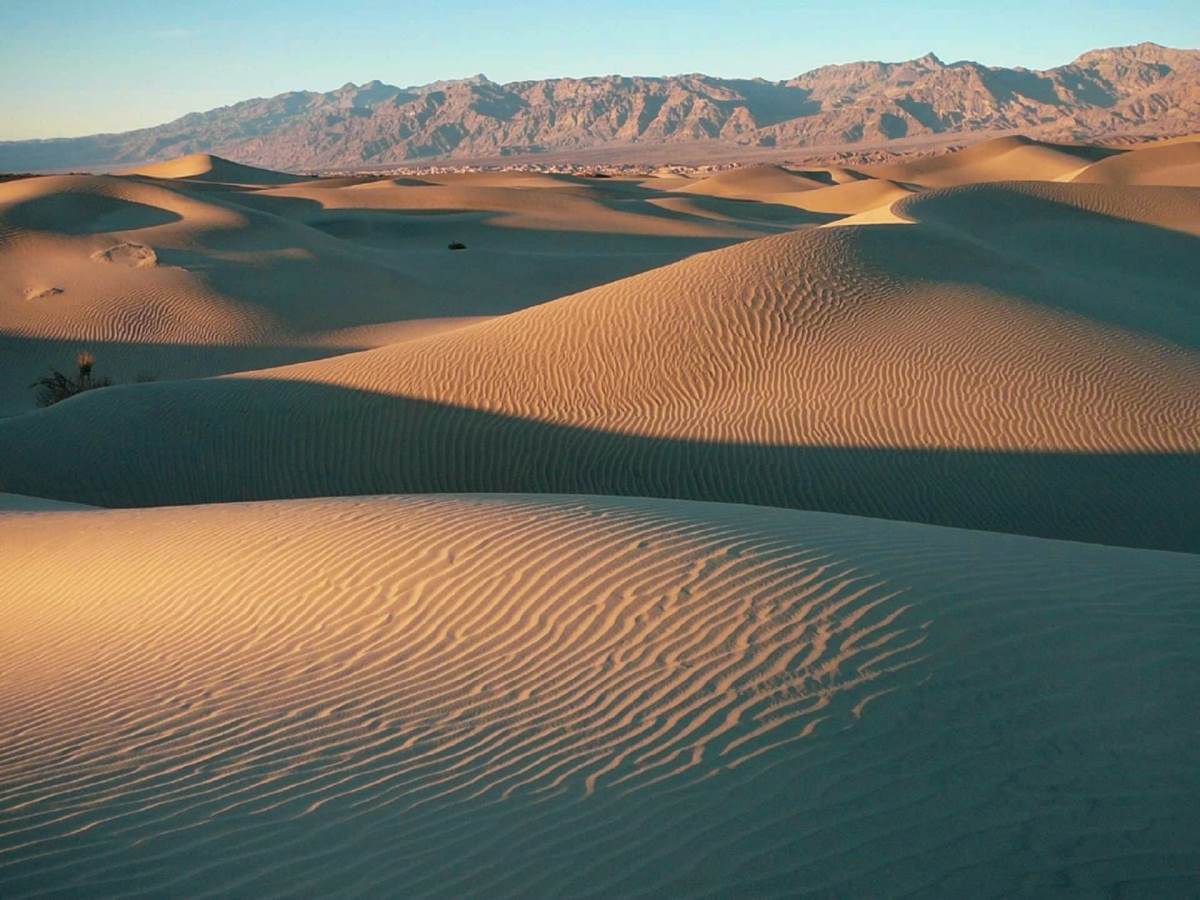
Accommodation in Death Valley National Park
Most people choose to visit Death Valley on a trip between Los Angeles and Las Vegas or the Grand Canyon. If you would like to stay overnight in Death Valley, this is of course also an option. However, the possibilities are very limited. You must remember to book your accommodation well in advance, especially in the peak season.
You’ll be able to find four hotels in Death Valley which are The Inn at Death Valley, The Ranch at Death Valley, Panamint Springs, and Stovepipe Wells Village Hotel. There are also 9 campsites in Death Valley. However, most are closed during the summer months. The most popular and central campsite is Furnace Creek Campground but be sure to book a spot in advance.
If you find it difficult to find an overnight stay in the park, you can also find accommodation outside of Death Valley. For example, you can stay at the Amargosa Opera House in Death Valley Junction. Another option is to stay overnight at one of the hotels or campgrounds in Beatty.
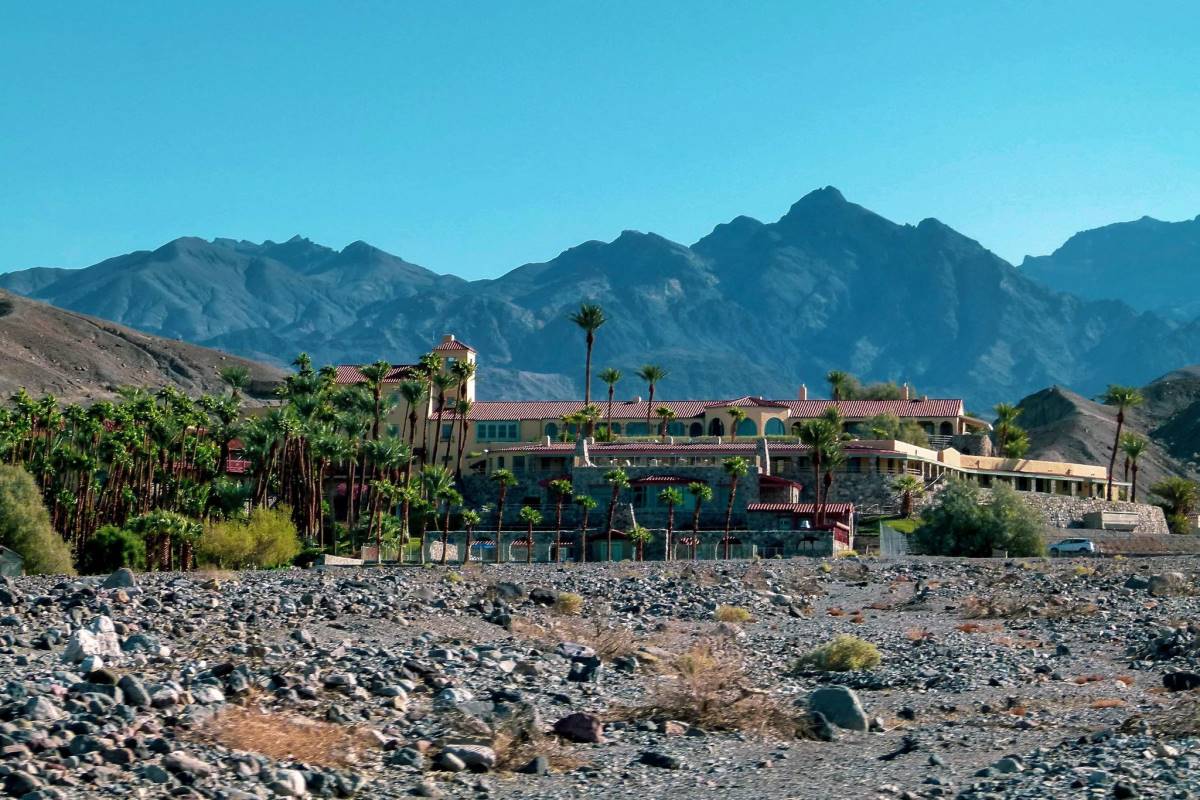
Places near Death Valley National Park
During your trip to Death Valley, don’t forget to visit some of the beautiful places nearby. However, you should be aware that it may take an overnight stay to reach some of the places. In this guide to Death Valley, I highly recommend combining your trip to Death Valley with these popular places to visit in the United States:
- Zion National Park (465 kilometers)
- Sequoia National Park (496 kilometers)
- Kings Canyon National Park (527 kilometers)
- Yosemite National Park (618 kilometers)
- Grand Canyon National Park (636 kilometers)

That’s all in this ultimate guide to Death Valley National Park. What are your favorite things to do in Death Valley? What are you looking forward to if you’re planning a trip to Death Valley National Park? Feel free to leave a comment.
Like this article? Pin it for later!
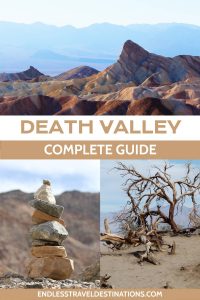
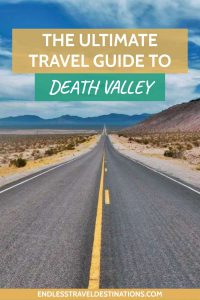
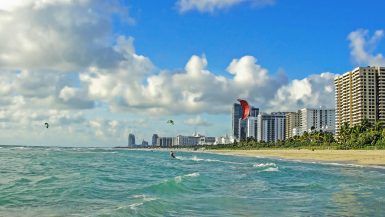
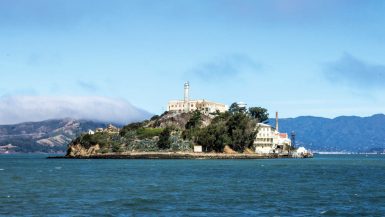
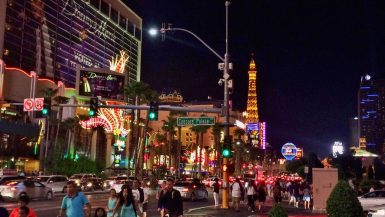
Leave a reply